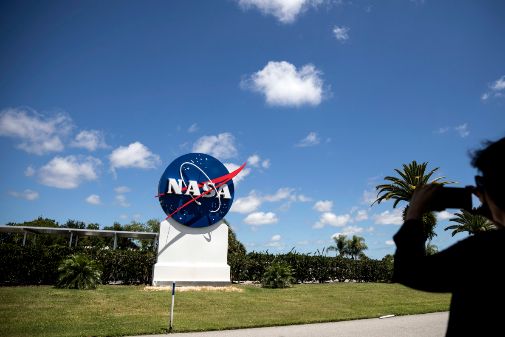NASA doctors and Dr. Stephan Moll of the University of North Carolina School of Medicine (EUU) have successfully treated the first case of thrombus, or blood clot, that an astronaut in space suffers during a mission on the International Space Station (ISS).
The blood clot of this American astronaut was asymptomatic and was discovered when he was doing ultrasound of his neck for a research study on how body fluids are redistributed in zero gravity. Thus, it was detected that he suffered from deep vein thrombosis (DVT) in the jugular vein of the neck.
The astronaut's identity remains anonymous for reasons of privacy, so information about when this event occurred is confidential. What has been released is that the astronaut had been on a six-month mission on the ISS for two months when his thrombus was discovered.
As it was the first time they faced something like this, there was no established method of treatment for DVT in zero gravity. Moll was contacted by NASA for his knowledge and experience in the treatment of these thrombi.
"Normally, the protocol to treat a patient with DVT would be to start with anticoagulants for at least three months to prevent the clot from getting bigger and to lessen the damage it could cause if it moved to a different part of the body, such as the lungs. There is a certain risk when taking anticoagulants that if an injury occurs, it could cause internal bleeding that is difficult to stop, "explains the researcher.
Pioneer space treatment
Moll and a team of NASA doctors decided that anticoagulants would be the best treatment for the astronaut. However, their pharmaceutical options were limited. The ISS has only a small supply of several medications on board, and there was a limited amount of the enoxaparin anticoagulant .
The scientist advised NASA about what dose of enoxaparin would effectively treat the clot and, at the same time, would last long enough until NASA could make a new shipment of medications to the ISS. Treatment with enoxaparin, a drug that is injected into the skin, lasted about 40 days. On day 43 of the astronaut's treatment, a special supply ship arrived at the ISS with apixaban, a pill taken by mouth.
During the entire treatment process, which lasted more than 90 days , the astronaut performed ultrasound scans on his own neck with the advice of a radiology team on Earth to control the blood clot. Four days before the return trip of the astronaut to Earth, he stopped taking apixaban. Moll and his NASA counterparts made that decision because of the physically demanding and potentially dangerous process of re-entry for astronauts, and they did not want their injury to be aggravated by the use of anticoagulants.
The astronaut landed safely on Earth and the blood clot did not require further treatment . Now, Moll continues to work with NASA and notes that more research is needed on how blood and clots behave in space. "Is this something that is more common in space? How do you minimize the risk of deep vein thrombosis? Should there be more medications of this type in the ISS? All of these questions must be answered, especially with plans that astronauts will embark on longer missions to the Moon and Mars, "Moll asks.
According to the criteria of The Trust Project
Know more- science
Health Hospital La Paz discharges the first child whose leukemia was treated with CAR-T cell therapy in Madrid
CyclingThe fight against Juanfran cancer: "The bike makes pain less"
CyclingThe queen stage of Juanfran: "The bike is what will get me out of cancer"

